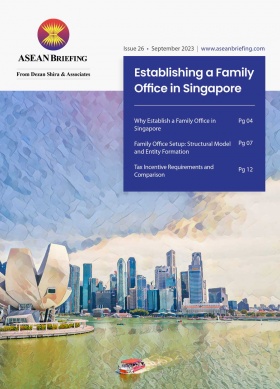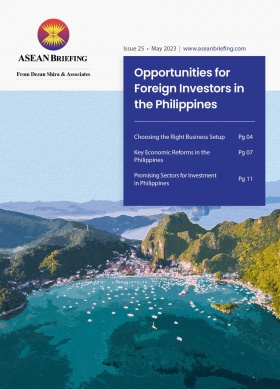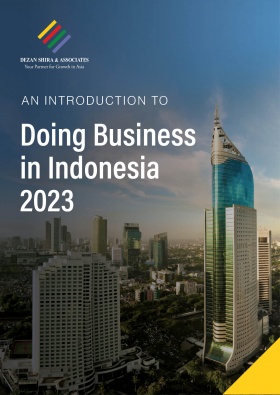The New Frontier: Southeast Asia’s Emerging Space Role
Increasing deployment of satellites and other payloads by ASEAN countries opens numerous avenues for foreign investment in the space sector.
In a world where space exploration is no longer the exclusive domain of superpowers like the USA, China, and India, Southeast Asia is carving out its own niche in the cosmos. While the region sees a significant uptick in aviation, spaceflight services are still nascent in comparison. However, the increasing deployment of satellites and other payloads into orbit by ASEAN countries opens numerous avenues for foreign direct investment (FDI) in this burgeoning sector.
With commercial space activities gaining momentum worldwide, ASEAN countries are increasingly focusing on developing their space capabilities. This article explores the current state of space exploration and capabilities within Southeast Asia, set against the backdrop of global advancements in space technology.
Southeast Asia’s foray into space exploration is marked by a blend of national pride, practical applications, and regional collaboration. Countries like Indonesia, Vietnam, Singapore, Malaysia, Thailand, and the Philippines are developing space programs tailored to their unique geographical and economic needs.
Indonesia’s ORPA: Leading the region in space exploration
Indonesia’s Research Organization for Aeronautics and Space (ORPA), established as early as 1963, stands as a beacon of innovation and progress in Southeast Asia’s space sector.
LAPAN’s achievements are evident in its successful satellite programs. The LAPAN-A1 and LAPAN-A2 satellites, for instance, provide invaluable data for monitoring Indonesia’s vast archipelago, enabling effective resource management and disaster preparedness. These satellites have played a crucial role in mapping Indonesia’s terrain, assessing deforestation, and tracking the movement of marine vessels.
Beyond its own satellite development, ORPA has fostered a thriving space ecosystem in Indonesia. PT Dirgantara Indonesia, also known as Indonesian Aerospace, is a commercial company that designs, manufactures, and markets aircraft and their accessories. AeroTerrascan, another Indonesian player, specializes in the manufacture of unmanned aerial vehicles (UAVs).
Indonesia’s ORPA serves as an inspiration for other Southeast Asian nations, demonstrating the transformative power of space technology in addressing regional challenges and fostering economic growth.
Vietnam’s VNSC: Harnessing space for sustainable development
Vietnam’s engagement in space exploration dates to 1980, marked by a significant milestone when Pham Tuan became the first Asian astronaut to journey into space through his participation in the USSR’s Interkosmos research program.
After a long hiatus, Vietnam revitalized its space ambitions with the establishment of the Vietnam National Space Center (VNSC) in 2011. The VNSC has since played a pivotal role in promoting sustainable development via space technology. Its notable achievements include launching earth observation satellites like VNREDSat-1 and VNREDSat-2, which have greatly enhanced environmental monitoring and urban planning capabilities within the country.
VNREDSat-1, launched in 2013, provides high-resolution images of Vietnam’s land and water resources, enabling effective monitoring of deforestation, water quality, and agricultural practices. VNREDSat-2, launched in 2018, offers an even greater resolution, allowing for detailed urban planning and infrastructure development.
VNSC’s commitment to sustainable development extends beyond satellite technology. The center has established a dedicated center for research and development in space technology applications, fostering collaborations with universities and research institutions to address national challenges in areas such as agriculture, forestry, and disaster management.
Singapore’s satellite programs: A hub for innovation and entrepreneurship
Singapore has carved a niche in Southeast Asia’s space sector by focusing on satellite technology, particularly for earth observation and remote sensing. The nation has developed and launched several earth observation satellites, including the TeLEOS-1 and TeLEOS-2, which are used for a variety of purposes, including agriculture, environmental monitoring, and maritime security.
Singapore’s satellite expertise has attracted a dynamic ecosystem of space industry startups. These companies, such as Astroscale and SpaceBelt, are developing innovative technologies for the global space market. Astroscale, for instance, specializes in removing space debris from Earth’s orbit, while SpaceBelt is developing a network of small satellites for global connectivity.
The Singaporean government has played a crucial role in fostering this vibrant space industry, providing funding, infrastructure, and regulatory support. The nation’s Economic Development Board has established a dedicated Space Sector Strategy, outlining a roadmap for Singapore to become a global leader in space technology and applications.
Singapore’s satellite programs and thriving space industry serve as a model for other Southeast Asian nations, demonstrating the potential of space technology to drive innovation, entrepreneurship, and economic growth.
Malaysia’s space efforts: Strides in satellite technology and education
Malaysia’s journey in space exploration has been marked by significant strides in satellite technology and space science education. The Malaysian National Space Agency (ANGKASA), established in 2002, and its successor, the Malaysian Space Agency (MYSA), formed in 2019, have spearheaded these efforts.
Further, Malaysia’s satellite achievements include the successful launches of RazakSAT, an earth observation satellite, and Merah Putih, a communications satellite. These satellites have provided valuable data for monitoring Malaysia’s natural resources, tracking marine vessels, and enhancing communication infrastructure.
Education has been a cornerstone of Malaysia’s space endeavors. Several universities in the country offer degrees in aerospace engineering and space science, nurturing a skilled workforce for the nation’s growing space industry. MYSA, in collaboration with universities, has established a Space Education Center to promote space science and technology among Malaysian youth.
Malaysia’s space efforts highlight the importance of investing in both technology and education to advance a nation’s space capabilities.
Thailand’s GISTDA: A Pioneer in earth observation and space technology
Established in 2000, Thailand’s Geo-Informatics and Space Technology Development Agency (GISTDA) has been spearheading regional earth observation and space technology. With a focus on developing and utilizing satellite technology to address national and regional challenges, GISTDA has made significant contributions to environmental monitoring, disaster management, and resource management.
GISTDA’s flagship satellite program, THEOS, has been instrumental in providing valuable data for a wide range of applications. THEOS-1, launched in 2008, and THEOS-2, launched in 2021, have captured high-resolution images of Thailand’s land and water resources, enabling effective monitoring of deforestation, water quality, and agricultural practices. These satellites have also played a crucial role in tracking forest fires, mapping flood-prone areas, and assessing the impact of natural disasters.
Beyond its own satellite development, GISTDA has fostered a thriving space ecosystem in Thailand. Thai companies, such as SpaceTether and Thaichaospace, are developing innovative technologies for the global space market, including space tethers for power generation and nanosatellite-based constellations for various applications.
Thailand’s commitment to earth observation and space technology has not only benefited Thailand but has also served as an inspiration for other Southeast Asian nations to explore the potential of space technology in addressing their own challenges and fostering economic growth.
The Philippines’ PhilSA: Embracing space technology for disaster response and resource management
Established in 2019, the Philippine Space Agency (PhilSA) is the youngest space agency in Southeast Asia, but it is already making significant strides in developing satellite technology for disaster response and resource management.
PhilSA is currently working on the development of a Multi-Spectral Imaging (MSI) satellite, which is expected to be launched in 2024. This satellite will provide high-resolution images of the Philippines, enabling real-time monitoring of deforestation, water quality, and agricultural practices. The MSI satellite will also be used for disaster response, providing crucial data for assessing damage and coordinating relief efforts.
In addition to its satellite development efforts, PhilSA is also promoting the use of satellite technology for resource management, such as agriculture and forestry. The agency has established a Space Applications Center to provide training and support to government agencies and private companies on the use of satellite data.
PhilSA’s commitment to space technology is evident in its collaboration with international partners, such as the Japan Aerospace Exploration Agency (JAXA) and the European Space Agency (ESA). These partnerships provide PhilSA with access to advanced satellite technology and expertise, enabling the agency to develop innovative solutions for addressing local challenges.
The Philippines’ PhilSA is a testament to the growing importance of space technology in Southeast Asia. The agency’s focus on disaster response and resource management reflects the region’s vulnerability to natural disasters and the need for effective resource management strategies.
The global context: India, China, USA, and commercial activities
While ASEAN countries are making progress in space technology, they still have a long way to go compared to spacefaring superpowers, which have been achieving impressive strides. The Indian Space Research Organisation (ISRO) is known for cost-effective satellite launches and ambitious missions like Chandrayaan and Mangalyaan. In September 2022, ISRO furthered its lunar exploration with the launch of the Chandrayaan-3 mission, aiming to land a rover on the Moon’s South Pole.
China, under the China National Space Administration (CNSA), has been rapidly advancing its space capabilities. The launch of the Shenzhou 14 spacecraft in June 2022, transporting astronauts to the Tiangong space station, marks a key phase in China’s space exploration. Additionally, CNSA is developing the Long March 8R reusable rocket, slated for its first flight in 2023, demonstrating China’s innovative approach to space technology.
In the United States, NASA continues to lead deep space exploration efforts. The Artemis program, which aims to return humans to the Moon, saw a significant milestone with the launch of the Artemis I mission in December 2022. This mission sent the Orion spacecraft into an uncrewed lunar orbit, underscoring NASA’s dominance in space exploration.
The commercial spaceflight sector has been revolutionized by companies like SpaceX, Blue Origin, and Virgin Galactic. A notable event was SpaceX’s second test flight of its Starship spacecraft on November 18, 2023. This test flight, part of the company’s development program to create a reusable transportation system for human spaceflight, marked a significant milestone in the advancement of commercial spaceflight.
SpaceX’s Starship program aims to develop a fully reusable launch system capable of transporting humans and cargo to the Moon, Mars, and beyond. The second test flight successfully launched the Starship spacecraft to an altitude of approximately 10 kilometers before returning it to Earth for a vertical landing. While the spacecraft exploded shortly after landing, the test provided valuable data for SpaceX’s ongoing development efforts.
The involvement of commercial entities like SpaceX in space exploration is transforming the industry, leading to faster innovation, lower costs, and increased accessibility to space. These developments hold immense promise for the future of space exploration, opening up new possibilities for scientific discovery, commercial ventures, and human expansion beyond Earth.
Opportunities for businesses and FDI in the ASEAN space sector
In terms of venturing into space, ASEAN countries have been actively forging partnerships with established global space agencies, which is a testament to the region’s burgeoning capabilities in space technology.
Indonesia’s space agency, ORPA, has collaborated with agencies like CNES (France), JAXA (Japan), DLR (Germany), and NASA (USA), significantly focusing on satellite development and space exploration initiatives. Similarly, Vietnam’s VNSC, through alliances with JAXA and the European Space Agency, has launched satellites like VNREDSat-1 and VNREDSat-2, emphasizing environmental monitoring and natural resource management.
Singapore has seen its companies like Astroscale, partner with international counterparts such as Mitsubishi Heavy Industries in Japan, working on innovative space technologies like satellite servicing robots. Meanwhile, Malaysia’s MYSA has engaged in collaborations with NASA and JAXA, underscoring its commitment to environment-focused satellite technology.
These partnerships not only bolster ASEAN’s space capabilities but also pave the way for future ambitious projects. However, challenges like funding constraints, technical expertise, and infrastructure needs persist. Despite these hurdles, the opportunities for foreign direct investment (FDI) in the region are substantial.
ASEAN’s strategic location, commitment to sustainable development, and growing tech-savvy population present attractive prospects for international investors and collaborations. Regional cooperation can address funding and expertise gaps, and partnerships with foreign entities can provide essential resources and know-how. Investing in local education and training will further support the growth of a skilled workforce, essential for the sustained development of ASEAN’s space sector.
About Us
ASEAN Briefing is produced by Dezan Shira & Associates. The firm assists foreign investors throughout Asia and maintains offices throughout ASEAN, including in Singapore, Hanoi, Ho Chi Minh City, and Da Nang in Vietnam, in addition to Jakarta, in Indonesia. We also have partner firms in Malaysia, the Philippines, and Thailand as well as our practices in China and India. Please contact us at asean@dezshira.com or visit our website at www.dezshira.com.







